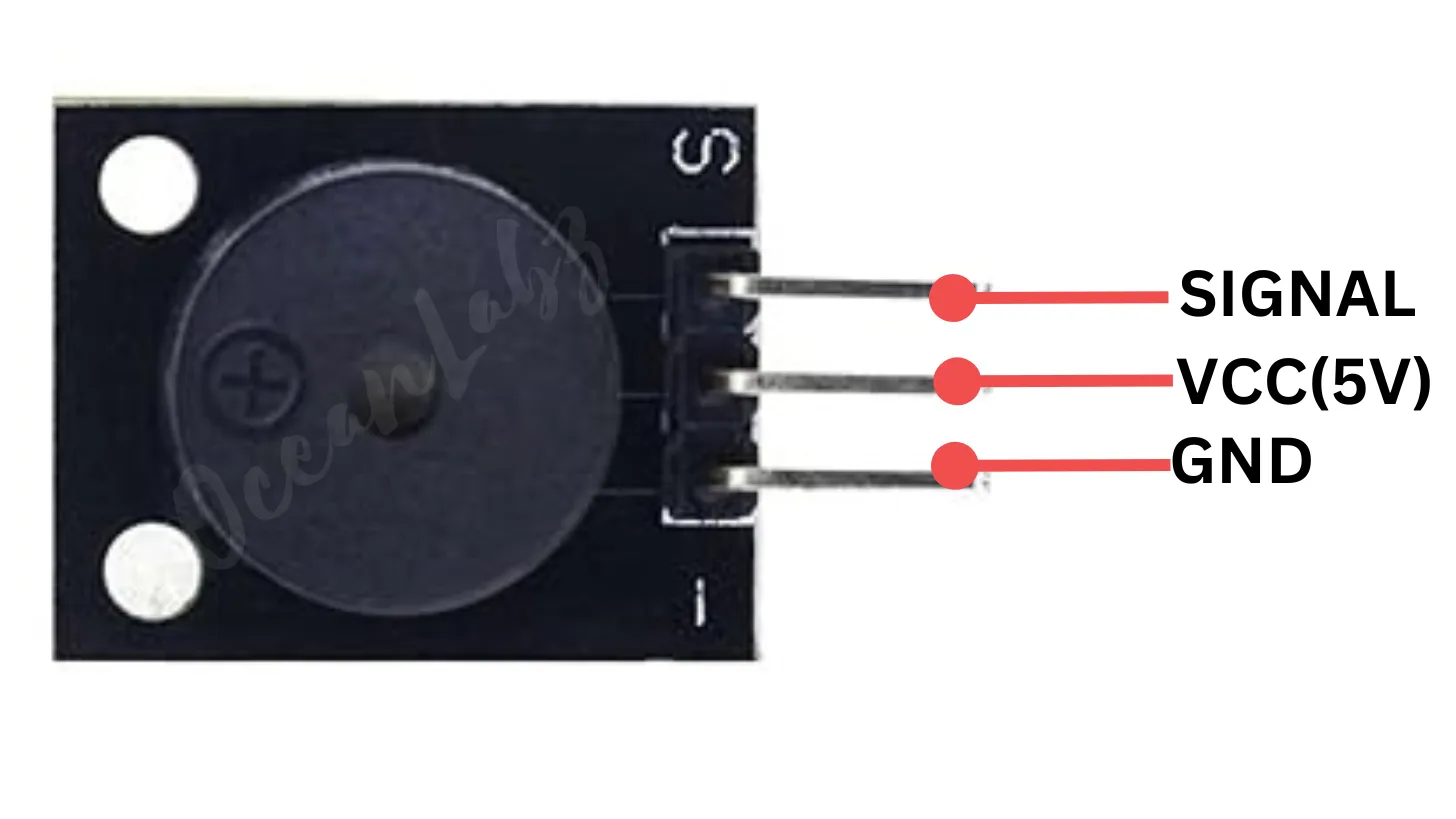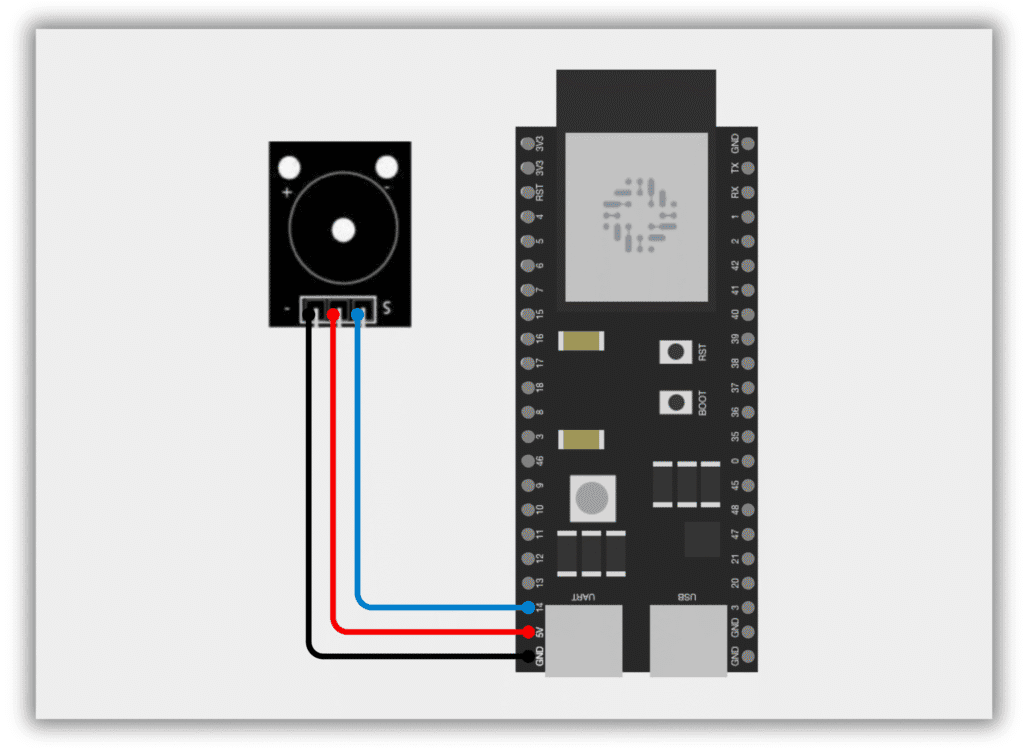Index
Introduction
In this tutorial, we learn how to generate sound using a buzzer with the ESP32-S3 board. We manually create different tones by rapidly switching the buzzer on and off using code. This is a beginner-friendly way to understand how frequencies and delays affect sound output. By the end, you’ll know how to make simple beeps and tones with your ESP32.
Required Components
- ESP32-S3 Board
- Buzzer module
- Jumper wires
- Breadboard (optional)
Pinout

Circuit Diagram / Wiring
- BUZZER VCC → 5V (ESP32-S3)
- BUZZER GND → GND (ESP32-S3)
- BUZZER SIGNAL → Pin 14 (ESP32-S3)

Code / Programming
/*
Filename: pwm_buzzer_tone.ino
Description: Play different tones using a buzzer connected to an ESP32-S3 via PWM
Author: www.oceanlabz.in
Modification Date: 1/4/2025
*/
int buzzerPin = 14; // Connect buzzer to GPIO14
void setup() {
pinMode(buzzerPin, OUTPUT);
}
void loop() {
playTone(1000, 500); // Play 1kHz for 0.5 seconds
delay(500);
playTone(1500, 500); // Play 1.5kHz for 0.5 seconds
delay(1000); // Pause between tones
}
// Function to generate square wave tone manually
void playTone(int frequency, int duration) {
long period = 1000000L / frequency; // Microseconds per cycle
long cycles = (long)frequency * duration / 1000; // Total cycles to play
for (long i = 0; i < cycles; i++) {
digitalWrite(buzzerPin, HIGH);
delayMicroseconds(period / 2);
digitalWrite(buzzerPin, LOW);
delayMicroseconds(period / 2);
}
}
Explanation
- Generates sound using a buzzer by toggling GPIO14 at specific frequencies, simulating tones.
- The
playTone()function creates square waves manually without using PWM functions. - Suitable for ESP32-S3 and all board versions, ensuring compatibility without
ledcWriteTone().
Troubleshooting
- Ensure the buzzer is connected properly (positive to GPIO14, negative to GND).
- Use an active buzzer for reliable tone output with digital signals.
- Select the correct ESP32-S3 board and COM port in the Arduino IDE before uploading.

